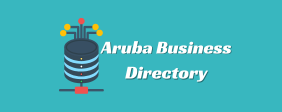While it may be necessary to use multiple processes and methods, this decision must be made by the entire organization. Management can then ensure that certain data entry practices, milestones, and standards are applied throughout the organization. To achieve this, it is essential to establish an ownership and governance process.
A 2006 study by McCarthy exploring changes in sales forecasting over a 20-year period showed that familiarity with quantitative methods was increasing relative to subjective methods.
However, accuracy still did not improve despite the availability of sophisticated tools and techniques. The study concluded that even when data was available and organizations could use quantitative techniques alone, this would not improve accuracy, as accountability at the organizational level is required.
Sales forecast performance and accuracy will only improve phone number library when companies commit to increasing investment in more resources and creating cross-functional sales forecasting processes (the more people involved in the forecasting process, the greater the accuracy); training programs not only for forecasters but also for stakeholders involved in forecasting, so they understand the techniques, process, and systems; and finally, a reward system for forecast accuracy performance.
Best practices to overcome sales forecasting barriers
If your company is facing all of the aforementioned obstacles to accurate sales forecasting, it’s important to take a step back and reevaluate your processes and systems. You can take the following steps to transform your business.
01. Review and organize your sales forecasting needs
Different functional areas require forecasting at different levels and paces.
Keep in mind that you can have more than one product line and integrating phone numbers with email lists item. Organizations with limited product lines can devote much more attention to any forecast than organizations with a broader product line.
What are your distribution channels for these product lines? A product sold through different channels, with its own demand pattern, may have its own forecasting needs.
Consider the different marketing regions, which will have regional differences and therefore change the demand and sales patterns for a particular product.
Finally, the degree of seasonality of the products you sell affects review business forecasting techniques. This may also be year-over-year seasonality, depending on the specific market you sell to. For example, Nordic countries tend to be away during summer vacations.
02. Create a data strategy around your sales forecasting needs
Evaluate the historical data you have, such as velocity, conversion, sales cycles, and productivity. How old is the data? How detailed is it? Do you have other internal and external data to create a more complete forecast? How accurate is the data? What data should be collected if there are gaps?
In a survey conducted by McKinsey , less than 50% of organizations actually use all the data available to them that can contribute to more accurate forecasting. This is often due to a lack of insight into the state of the organization’s data. Therefore, having a data strategy is critical.
